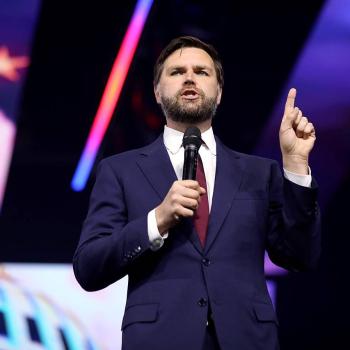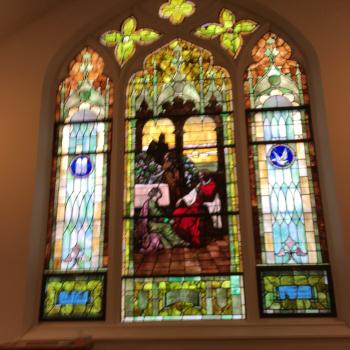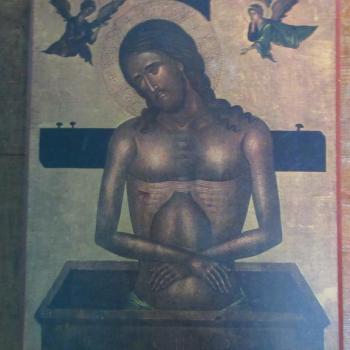Vox Nova is pleased to publish the following guest post by Rhonda Miska.
“Love recognizes no barriers. It jumps hurdles, leaps fences, penetrates walls, to arrive at its destination full of hope.”
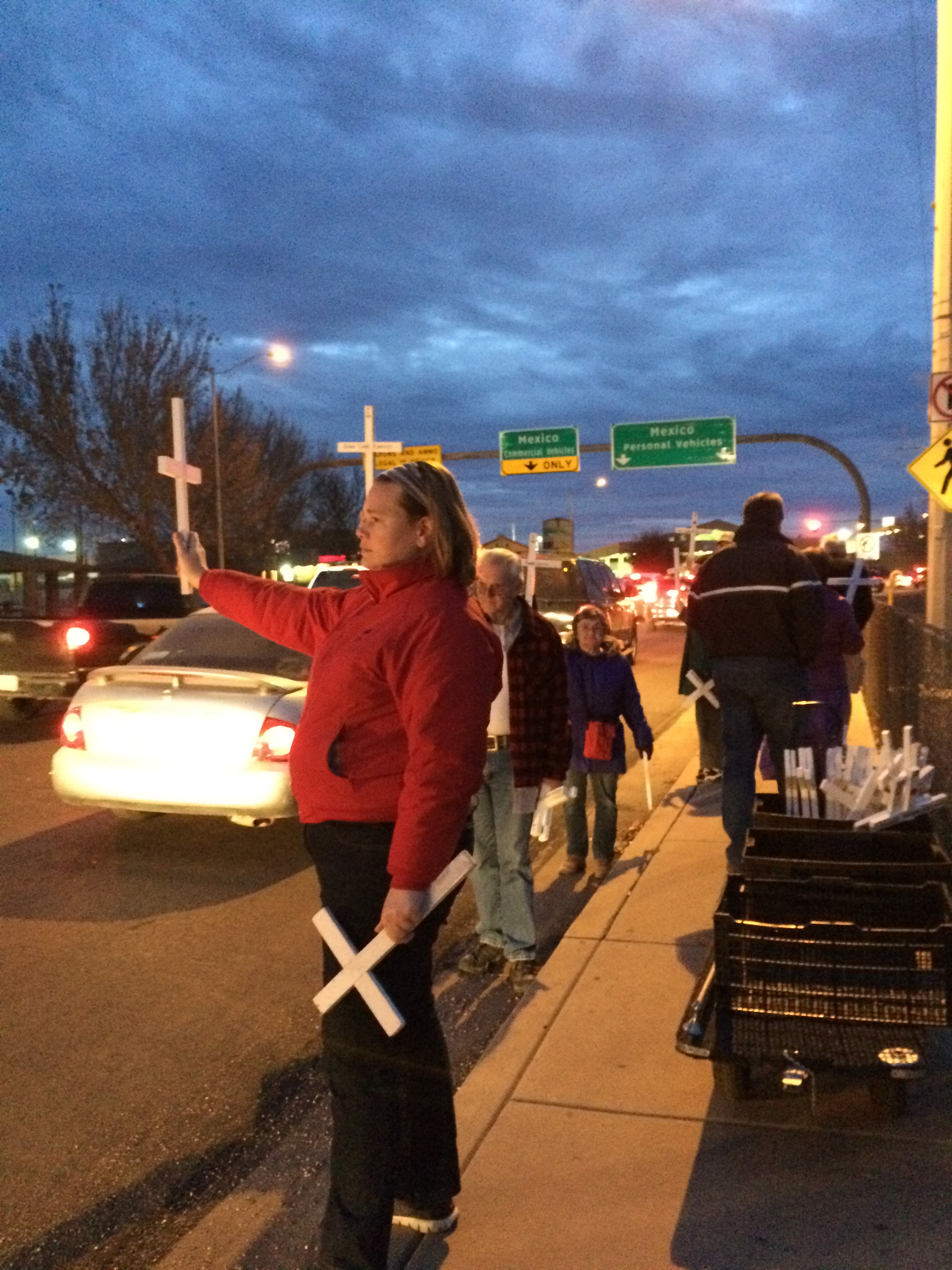
This was the refrain repeated over and over as I stood in a prayer circle of about thirty interfaith activists, a few steps from the border checkpoint between Douglas, AZ and Agua Prieta, Sonora. Every Tuesday evening, local activists and visitors to the border gather for a “Healing Our Borders” Vigil to pray and remember those who have died making the journey north. We processed down the street towards the border checkpoint, calling out the names of some of the estimated 6,000 migrants who have died along the nearly 2000-mile US/Mexico border. For those whose bodies were decomposed when they were discovered in the desert – we simply announced no identificado or no identificada. We held up white crosses and named them present – presente – proclaiming their lives as dignified and their deaths as worthy of commemoration. Like John the Baptist, that marginal voice in the wilderness we had heard about in the week’s Gospel readings, we were seeking to speak truth.
Our prayerful remembrance of these migrant deaths happened as day turned to dusk, the crescent moon rose, and streetlamps with their fluorescent glow clicked on. Back home, I knew my Sinsinawa Dominican Sisters – along with all those who follow the monastic rhythm of liturgical prayer – were gathered for vespers, which closes with a supplication for “a restful night and a peaceful death.” My heart carried lament for deaths from hyperthermia and dehydration under the relentless desert sun, deaths not marked by the comfort of anointing oil, words of final blessing, or the ease of a deathbed attended by loved ones.
One of the crosses I held during the vigil was marked with the name of Noé Alvarez López – born July 16, 1980. His remains were found in the desert on May 15, 2003. He was born three weeks before me. Our mothers were pregnant at the same time. He died when we were both 22 years old. At the time of Noé ’s death, I was living in rural Nicaragua as a Jesuit Volunteer
I compared and contrasted my life with Noé ’s during the vigil. As young adults, we had both ventured forth from our home countries: he traveled north, I traveled south. I traveled by airplane, my trip facilitated by a US passport, a bank account, a college education, and the financial and spiritual support of family and friends. Noé made the journey at least in part on foot, presumably without the any of the privileges that benefitted me. I was welcomed as a humanitarian volunteer, he was funneled through dangerous, remote, mountainous Sonoran desert trails to evade detection by authorities.
As I held the white cross bearing Noé ’s name to the sky and called out his name, I wondered about his motivations, his life, his journey. Like me, was he filled with youthful, adventurous dreams of what he would learn and accomplish in a foreign land? Had he felt the same tingle of anticipation and excitement as me when he thought about leaving home? Were there loved ones he was heartbroken to leave behind? Like my own great-grandparents who came to the US from Slovakia, was he seeking an escape from poverty and the promise of a higher standard of living? Or was he fleeing violence and seeking safety? Was he indigenous, with roots in this hemisphere that stretch back long before the arrival of European conquistadors – a native speaker of Ixil, Mixtec, Mam, Quiche, or one of many other indigenous languages spoken in Mexico and Central America?
As I walked down the street in a solemn procession of human rights activists, I wondered: was Noé a native of a big city who grew up amid the noise and chaos of car horns, street vendors, and radios blaring reggaeton that I learned to tolerate – and even appreciate – in Managua? Or was he from the campo, cultivating corn or coffee shoulder-to-shoulder with his family as they had for generations, until NAFTA made it impossible for them to earn a living?
A google search fleshed out some of Noé ’s story and answered some of my question. He was from Moroleon in the state of Guanajuato, Mexico. He was married to Maria Miriam Almanza Tenorio, who made the journey north with him from Moroleon to the border town of Naco, and then across the border near Coronado National Park. They hoped to travel to Pennsylvania. Noé experienced breathing problems and hallucinations brought on by heat and dehydration after hours of walking in the rugged, remote terrain of the Huachuca Mountains. When he couldn’t keep up, he was abandoned by the smugglers to whom he had paid $3000 for his and Maria’s safe passage. Maria went in search of medical attention, walking three hours to a gas station where an attendant called for help. When the Border Patrol arrived, Noé – made in God’s image and likeness, and beloved by God – had died. Noé ’s remains were sent back to Mexico, and Maria – now a widow – was deported back.
To think this is one story among thousands like it boggles the mind. Noé ’s white cross was one of thousands in the wagon of white crosses we used at the vigil. To think of Noé as a peer, as someone like me, and name him as “made in God’s image and likeness and beloved by God” stretches my heart. A google image search for “illegal aliens” surfaces images of grainy, night-vision photographs of backpack-wearing men scaling a border wall or navigating rocky desert trails, single-file. More alarmingly, it also surfaces white supremacist websites calling immigrants as “invaders” (and worse), calling for mass deportations and comparing these human beings to rats.
More subtle but also problematic are mainstream media conversations about “illegals” which implicitly assume that “we” have a right to be here and “they” don’t, that ignore our history as a nation of immigrants. Disturbingly, our current political climate normalizes and legitimates viewpoints which demonize those who are different – especially immigrants from Latin America. As a Catholic, as a Dominican-Sister-in-training, as an American citizen, as a human being, I want to clearly, lovingly, and unequivocally resist this troubling national rhetoric – which has reached a fever pitch in recent weeks – and affirm migrants in our circle of holy belonging.
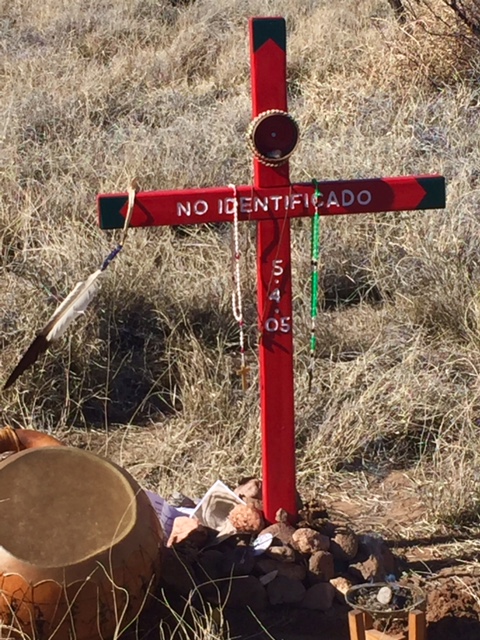
The words and images in media coverage about migrants and migration are powerful external factors that cause us to see those who are different as outside our circle of belonging. However, dehumanizing the “other” – be they Mexican, Muslim or any other minority group in a given culture – is not simply the result of our internalization of media images. The uncomfortable truth is that implicit biases are hard-wired into our brains. Harvard psychologist Dr Mahzarin Banaji, author of Blind Spot: the Hidden Biases of Good People, claims that the human mind is a “difference-seeking machine” and has created an online self-test to uncover implicit bias. Her research shows we unconsciously label others as either like us or not, based on race, gender, and other features – even if consciously we would disapprove of these biases. The tendency to instantaneously perceive and judge another as part of our “in group” or “out group,” according to Banaji, “a feature of evolution” which no longer serves us in our diverse, post-modern world.
So how are we to recognize and resist unconscious biases and the “othering” of the other in order to cultivate human solidarity? Banaji claims that “there is some suggestion that breaking bread together, having intimacy of other kinds together, continuously,” is a way to overcome implicit biases. “The brain is…extremely malleable to experience,” and despite our hard-wiring, “we can resist a predisposition for bias,” that is, our evolutionary legacy to fear and mistrust those our brains categorize as outside of our “in group.” Banaji recommends cultivating relationships with those who are different. We can work to expand the circle of holy belonging, to – in the words of Jesuit Father Greg Boyle – cultivate kinship and “inch our way closer” as “we imagine a circle of compassion, {and} nobody’s standing outside that circle.”
Banaji’s claim that the mind is “plastic enough that it can be reset in a new mold” evokes Paul’s challenge to the Romans (and all of us) to be “transformed through the renewing of our minds” (Romans 12:2). Surely, Paul couldn’t have imagined what we are now able to know about our brains through functional MRIs and other technology. Yet the timeless Christian call to continual conversion must take into consideration and draw from the insights of psychology and neuroscience, moving from addressing our conscious attitudes to unconscious ones.
One week after the Healing Our Borders vigil in Douglas, I attended Sunday Mass at Our Lady of Guadalupe monastery in Phoenix, Arizona as part of a Giving Voice gathering Catholic Sisters in our 20s and 30s. We sang the song “One Bread, One Body” – one familiar to me and many Catholics – as the communion hymn. Given my recent time on the border and our current political reality, I heard the familiar lyrics differently as I sang the soprano descant and processed forward to receive the Eucharist. The words “and we though many/throughout the earth/we are one Body in this one Lord” resonate with Banaji’s challenge for us to “break bread together” and overcome implicit biases in doing so. The hymn – and the act of sharing Eucharist itself – contradict the many forces in our nation and world which dehumanize those who are different.
Rather than a pious pie-in-the-sky song about Christian unity, the hymn felt like an anthem of resistance, a call to solidarity, a full-throated assertion of our common humanity, a proclamation of the truth of our human oneness over against any voices that deny and exclude anyone from the circle of holy belonging. To sing it the Sunday before the inauguration and amid a racially diverse congregation in Arizona – ground-zero of our nation’s contentious immigration debate – felt compelling and prophetic.
At the conclusion of the Healing Our Borders Vigil in Douglas where I had proclaimed Noé ’s name and reflected on his life and death, a local leader invited us to speak our own names into the circle. Those gathered called back presente as a way of witnessing and affirming each individual’s commitment to working for justice, expanding the circle of belonging, saying yes to solidarity and no to dehumanization, recognizing all as “made in God’s image and likeness, and beloved by God.”
Rhonda Miska is a candidate with the Sinsinawa Dominican Sisters who is currently co-authoring a book on Dominican holy women. She holds an MA from the Boston College School of Theology and Ministry and serves with Catholic Charities of the Archdiocese of Dubuque Immigrant and Refugee Services. Read more of her writing at: www.clippings.me/rhondamiska



